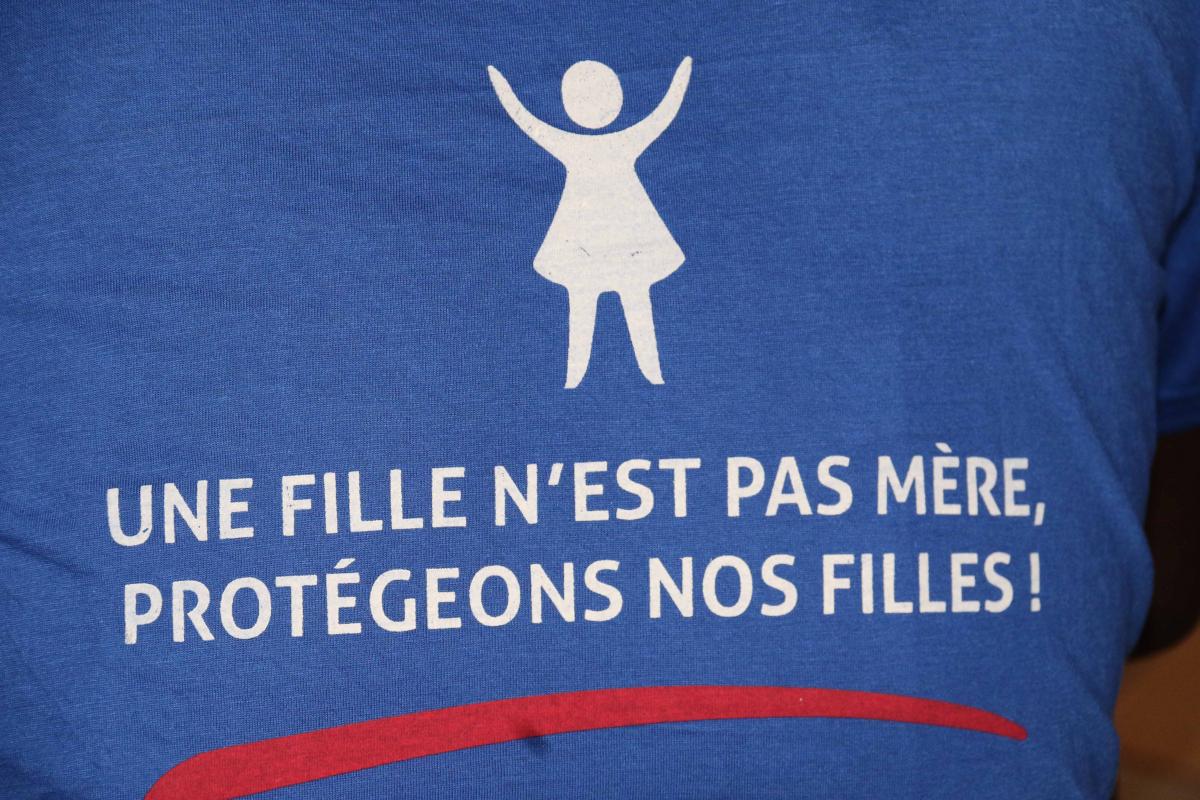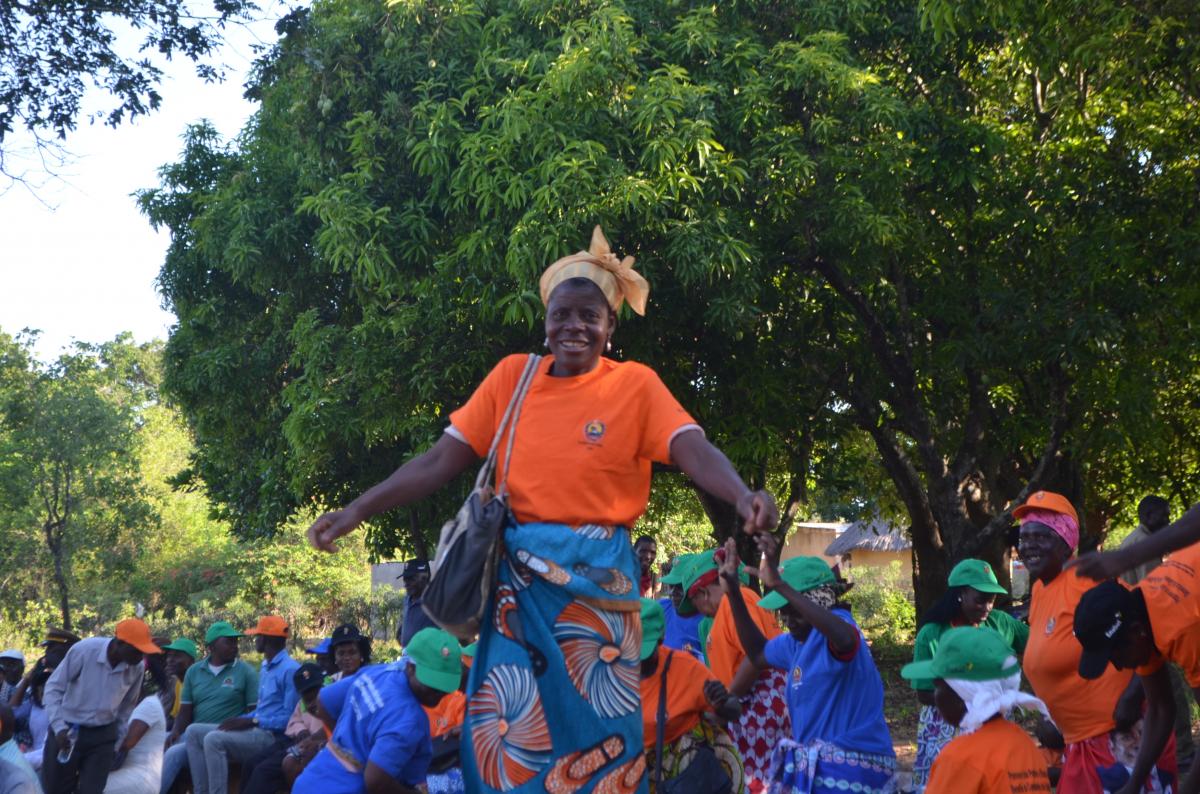Rechercher
Affichage de 2160 à 2175 sur 3048 actualités
-

Elevage dans la région de Koulikoro : vers la professionnalisation du métier d’éleveur à travers l’embouche.
Nènè TRAORE | 26/02/2020
Dans le cadre du projet d’Appui au renforcement de l’élevage et de l’économie pastorale au niveau de la Région de Koulikoro, un partenariat commercial sur la viande rouge a été mis en place entre Disnepal, une PME de distribution- négoce de produits alimentaires et une coopérative d’éleveurs à Fana. Au départ, des campagnes de sensibilisation ont eu lieu auprès des éleveurs afin qu’ils adhèrent à l’idée. Il s’agissait pour eux de mettre en embouche un certain nombre de bovins sur une durée minimum de 70 jours et maximum 90 jours. Au total, quinze éleveurs ont été mis en relation avec la PME pour cette phase pilote suivant des critères. C’est ainsi que le 14 février 2020 a eu lieu la livraison des animaux à la PME à Fana. Cette opération a consisté au pesage des animaux pour déterminer leur poids de sortie. A l’issue de ce processus, les éleveurs ont tiré des enseignements à savoir : le respect de l’itinéraire technique mis en place pouvant aboutir à des animaux de qualité qui répondent au cahier de charge de la PME ; la professionnalisation du métier d’éleveur qui constitue des avantages pour eux et enfin réussir à casser le mythe chez les éleveurs qui est désormais d’accepter de vendre les animaux au poids vif.
-

Active Teaching and Learning Experiences
Dorothy KYAMAZIMA | 26/02/2020
“Tell me and I forget, teach me and I remember, involve me and I learn.” Teachers are stepping away from the old chalk and talk method and now using Active Teaching and Learning for effective teaching in their classrooms.
-

Les partenaires du projet Amuddu identifient des actions pour contribuer à l’équité de genre pour une meilleure intégration des personnes migrantes.
Saïd SAHLI | 24/02/2020
Déconstruire les stéréotypes envers les personnes migrantes pour mieux intégrer celles qui sont en situation de vulnérabilité dans le marché de l’emploi et l’auto-emploi était l’un des objectifs de la formation-action sur l’approche genre organisée par le projet Amuddu. Les partenaires du projet Amuddu ont approfondi leurs connaissances sur l’approche genre et ont élaboré un plan d’action opérationnel pour l’intégration de cette approche au sein du projet « Amuddu », lors de la formation-action organisée à Rabat du 4 au 7 février 2020. En outre, plusieurs points ont fait l’objet de discussions très constructives et qualitatives de la part des participant.e.s, d’ailleurs inscrits dans le programme de l’atelier, présentés par l’experte internationale en genre, Mme. Marcela de la Pena, tel que la déconstruction des préjugés, la compréhension des mécaniques d’exclusion et l’appréhension des couches de discrimination envers les personnes migrantes en situation de vulnérabilité, notamment à travers l’adoption d’une analyse de l’intersectionnalité des discriminations. Cette formation-action organisée par le projet Amuddu -mis en œuvre par Enabel en partenariat avec le Ministère délégué chargé des Marocains résidant à l’étranger, l’Entraide nationale et l’ANAPEC- pendant quatre jours, au profit des partenaires et des équipes du projet a été l’occasion d’interpeller les participant.e.s sur différentes thématiques interreliées, mettant le focus sur le lien entre le genre et la migration. « A contrario des formations générales sur le genre qui présentent plus des aspects liés aux violences contre les femmes et qui ne sont pas des moindres, cette formation a fait le focus sur la question de l’intégration économique des femmes migrantes et des inégalités à tenir en compte pour leur meilleure mobilisation puis intégration socio-économique » dixit un des participants. En effet, pendant ces quatre jours de travail participatif et de co-construction, les présent.e.s ont exploré, à travers des données factuelles et encadrées par l’experte internationale genre, le parcours de migration avec une attention particulière à la situation des femmes, parfois très rude, ainsi que les conditions de vie locales dans le pays hôte, qui font que cette cible soit vulnérable et plombée par plusieurs inégalités à la base. Les femmes migrantes peuvent être seules ou accompagnées par des enfants ou la famille, avec des niveaux de formation variés, confrontées seules à plusieurs écueils qui ne sont généralement pas pris en considération lors de son processus d’intégration économique. Au-delà des objectifs de la formation-action définis par le projet, notamment la vulgarisation des concepts liés au genre et des outils d’analyse des rapports et rôles sociaux entre l’homme et la femme, ainsi que l’élaboration d’un plan d’action opérationnel pour intégrer le genre dans le projet, il s’est agi également de partager des constats et des témoignages émouvants par les participant.es, qui ont certainement contribué à une prise de conscience. À l’issu de cette action d’apprentissage, toutes et tous les apprenant.e.s ont exprimé leur satisfaction quant à la qualité des données, concepts et outils présenté.es dans le moule d’une méthodologie interactive et audio-visuelle. Dite formation a été lancée dans le cadre d’une approche globale basée sur les droits humains, porté par Enabel visant l’autonomisation (empowerment) des femmes et la promotion de l’égalité des femmes et des hommes lors de l’exécution de ses programmes de développement. Dans ce sens, Enabel a élaboré une Stratégie genre qui couvre la période de 2019-2023, We for her[1], qui concerne toutes ses interventions. La nouvelle Stratégie genre 2019-2023 souligne qu’Enabel continuera à s’engager pour l’automatisation des femmes et pour la promotion de l’égalité entre les femmes et les hommes, le genre est ainsi inscrit dans l’ADN d’Enabel. Cette stratégie propose un travail à deux niveaux : d’une part, une intégration du genre à la politique de développement, aux programmes et projets (niveau opérationnel) et, d’autre part, le gender mainstreaming sur le plan organisationnel (niveau organisationnel). [1] ENABEL : Note relative à la stratégie genre 2019-2023. WE FOR HER - #weforher et Enabel : Stratégie genre 2019-2023. #WE FOR HER. Plan d’action 2019-2023. Actions en 2019.
-
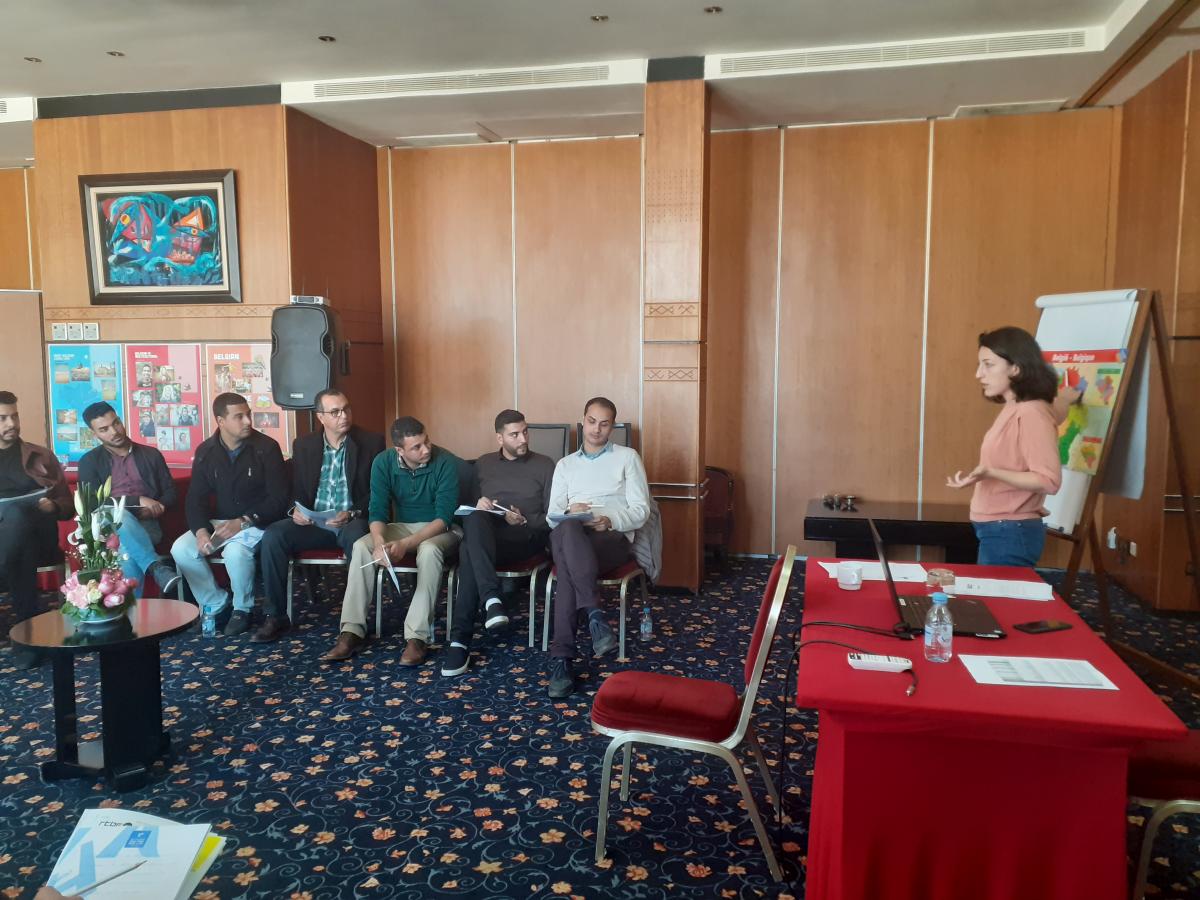
Scéances d'informations au profit de 120 jeunes
Meriem HILALI | 17/02/2020
Dix séances d'information ont été tenue du 04 au 14 février par l’Agence fédérale pour l'accueil des demandeurs d'asile (Fedasil) au profit des 120 jeunes demandeurs d'emploi dans 5 villes différentes au Maroc qui suivent la formation JAVA depuis le mois de novembre 2019 dans le cadre du projet PALIM, cette intervention vise à répondre aux pénuries de main-d'œuvre à travers des modèles de migration innovants. Le projet pilote est mis en œuvre par Enabel, Agence belge de développement, en partenariat avec l’Agence nationale marocaine de promotion de l'emploi et des compétences (ANAPEC), le Service flamand pour l’emploi et la formation professionnelle (VDAB), le Réseau flamand d’entreprises (VOKA), la Confédération Générale des Entreprises du Maroc (CGEM), la Fédération belge d’entreprises technologiques (AGORIA) et la Fédération marocaine des Technologies de l'Information, des Télécommunications et de l'Offshoring (APEBI). Une trentaine d’entre eux seront sélectionnés pour travailler en Flandre, L’objectif est de les orienter sur les éléments légaux et culturels relatifs à la mobilité internationale vers la Belgique et plus particulièrement la Flandre.
-
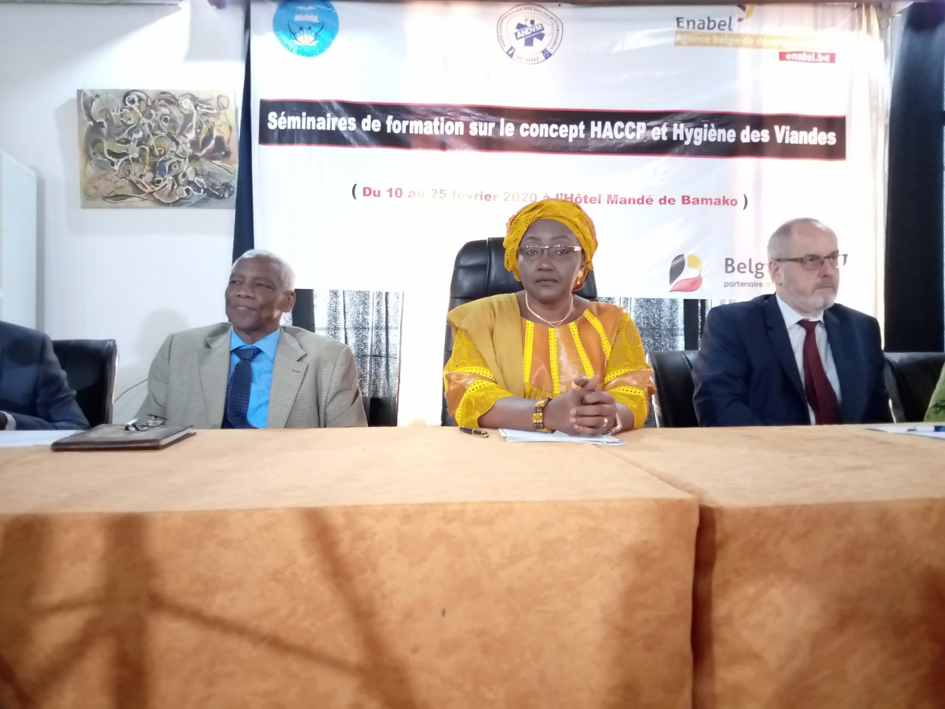
Enabel renforce les connaissances des docteurs vétérinaires en hygiène des viandes et en système d’inspection dans les abattoirs
Nènè TRAORE | 17/02/2020
Enabel renforce les connaissances des docteurs vétérinaires en hygiène des viandes et en système d’inspection dans les abattoirs. Bien qu’il existe une réglementation et une implication de l’État malien dans la promotion de la sécurité sanitaire des aliments, force est de constater que la majorité des professionnels de la viande, vétérinaires et autres spécialistes de production animale ne maîtrisent pas l’analyse des risques comme méthode objective et justifiable pour évaluer et gérer ces risques sanitaires. C’est dans cette optique que le projet de Renforcement des capacités des institutions et des acteurs de la société civile au niveau de la région de Koulikoro et du niveau central (IRC) a organisé, du 11 au 22 février 2020 à Bamako, un séminaire de formation à l’intention d’une vingtaine de docteurs vétérinaires sur l’hygiène des viandes et la mise en application d’un système d’inspection dans les abattoirs. La cérémonie d’ouverture a été présidée par madame Kané Rokia Maguiraga,, ministre de l’élevage et de la pêche du Mali, en présence de monsieur Adrien Théâtre, ambassadeur de la Belgique. Pour la ministre, cette formation aura un impact positif pour les vétérinaires maliens, puisqu’elle permettra de les mettre au même niveau en santé publique vétérinaire et d’organiser la structure de production des abattoirs. D’autre part, les consommateurs auront des produits de qualité qui respectent les règles d’hygiène. La formation a été animée par Dr Boubacar Sidibé, expert international en matière de sécurité sanitaire des aliments d’origine animale. Les thématiques abordées au cours des deux semaines étaient : les dangers dans les aliments, les maladies liées à la viande, les zoonoses transmissibles à l’abattoir, les principes généraux d’hygiène alimentaire, la gestion parasitaire intégrée, les systèmes nationaux de contrôle alimentaire, les principes de l’HACCP (Hazard Analysis and Critical Control Points) et la mise en pratique en abattoir, etc.
-
Promouvoir la Santé Sexuelle et Reproductive et l’accès à l’information sanitaire : Un nouveau défi pour Enabel au Bénin
Reece-hermine ADANWENON | 13/02/2020
Les communes d’Allada et d’Aplahoué ont respectivement accueilli, le mardi 11 et mercredi 12 février 2020 les cérémonies marquant le lancement officiel du Programme d’Appui à la Santé Sexuelle et Reproductive et à l’Information Sanitaire (P@SRIS). Durant ces deux jours, il s’est agi de : • informer et sensibiliser les populations sur le but, les objectifs, les stratégies, les activités et les résultats attendus du P@SRIS • orienter les décideurs et acteurs clés de SSR/DSRAJ des zones d’interventions sur le contenu du programme ainsi que sur les rôles et responsabilités des acteurs clés dans sa mise en œuvre efficace •susciter l’adhésion et l’engagement des autorités, des personnes ressources et des bénéficiaires zones d’interventions concernées. A Allada, comme à Aplahoué plusieurs voix se sont succédées pour saluer cette initiative de Enabel au Bénin à travers le P@SRIS, qui contribuera à améliorer la situation des adolescents et jeunes en matière de santé sexuelle et reproductive. Il favorisera une maternité sans risque et organisera la lutte contre les violences sexuelles et basées sur le genre. Le P@SRIS renforcera aussi la qualité de l’information sanitaire et sa mise à disposition auprès des acteurs du système de santé pour une prise de décision informée et en temps réel. Au cours des cérémonies, les lauréats au concours Mes droits j'en parle ont été primés . Provenant des collèges d’Enseignement Général CEG ou Collèges privés, les lauréats âgés de 12 à 20 ans ont été présentés par leurs établissements respectifs pour concourir dans les différentes catégories de leur choix à savoir : Sketch/Théâtre, Art oratoire (Poésie/Discours/Essai) et Art plastique (Dessin/Peinture). A l’issue du concours, 19 prix d’un montant total d’environ 3.500.000 Fcfa ont été décernés aux lauréats dans les 03 différentes catégories. Le CEG Bertrand Dagnon de Ouidah et le Collège le Pivot sont repartis avec les premiers prix dans la catégorie Théâtre. Dans la catégorie Art oratoire, le CEG1 De Lalo et le CEG Bertrand Dagnon de Ouidah ont remporté les premiers prix et dans la catégorie Art Plastique les premiers prix sont revenus au CEG de Godomey et au Collègue Catholique d'Azovè.
-
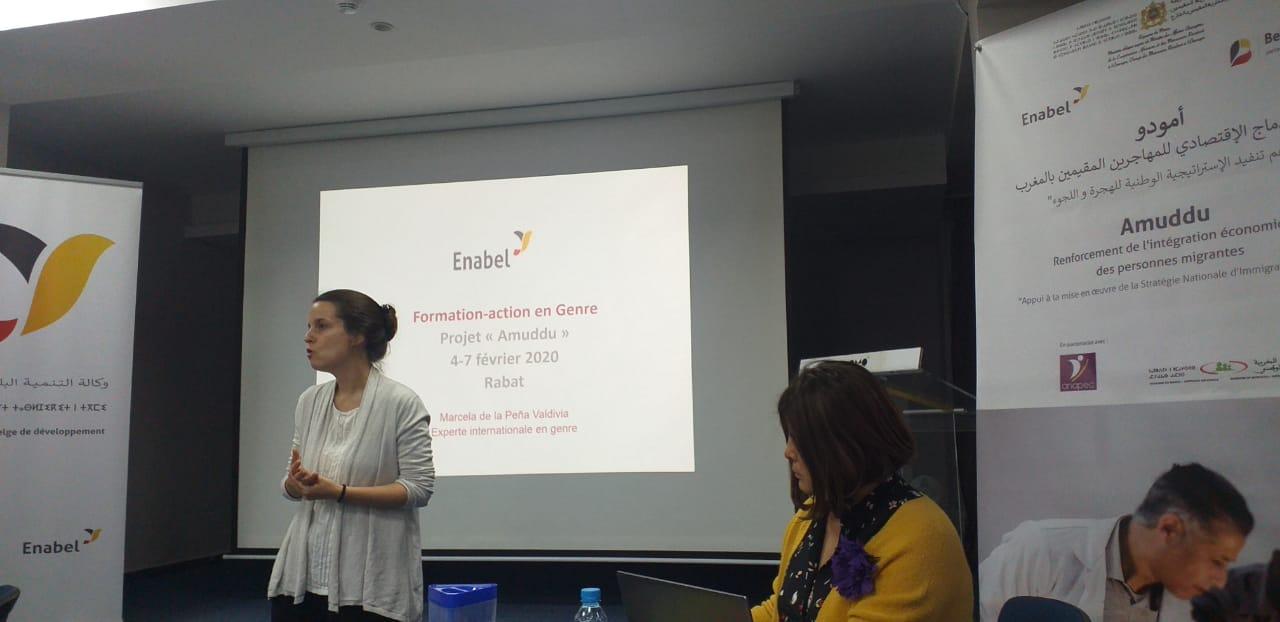
Une formation action en genre
Meriem HILALI | 13/02/2020
Du 4 au 7 février 2020, formation action en genre au profit des partenaires institutionnels et de l'équipe du projet d'Appui à la mise en œuvre de la stratégie nationale d'immigration et d'asile, et ce pour l'élaboration d'un plan d'action opérationnel pour l'intégration de l'approche genre.
-
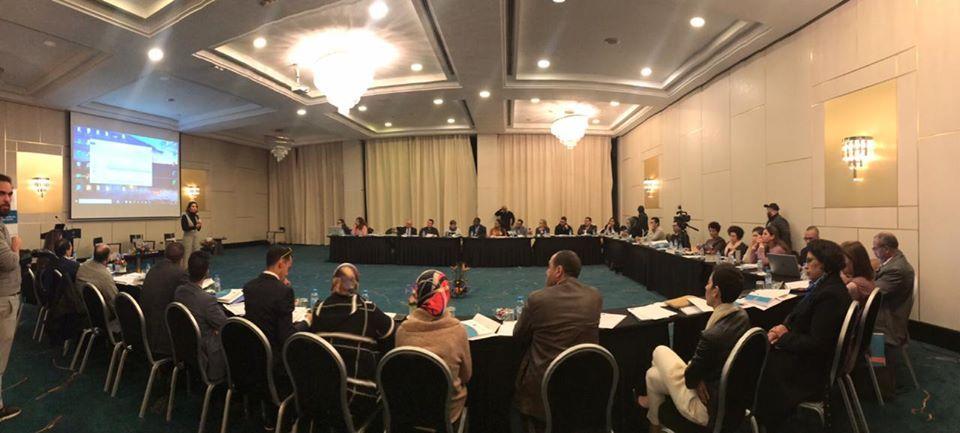
Un atelier d’échanges sur les thèmes du droit d’asile, de la migration et du travail clinique
Meriem HILALI | 13/02/2020
Financé par le fonds fiduciaire d’urgence de la Délégation de l'Union Européenne et mis en œuvre par Enabel au Maroc en partenariat avec le Ministère de la Justice et le Ministère Délégué Chargé des MRE et des Affaires de la Migration Le projet Empowerment juridique des personnes migrantes a organisé mercredi 5 février 2020 à Casablanca, un atelier d’échanges sur les thèmes du droit d’asile, de la migration et du travail clinique. Ciblant plus spécifiquement les thématiques du droit d’asile, de la migration et du travail clinique, cette rencontre permettra de renforcer les outils de travail des professeurs, doctorants et étudiants impliqués dans les cliniques juridiques.
-

Renforcement des capacités des collectivités : Enabel s’implique
Nènè TRAORE | 12/02/2020
Une trentaine d’agents de la mairie de Koulikoro et leurs partenaires locaux à savoir des membres des organisations communautaires ont participé du 30 au 31 janvier 2020 à un atelier de formation en élaboration des outils de planification du développement social, économique et culturel et du programme d’investissement.Cette formation avait comme objectif de renforcer les capacités individuelles des principaux acteurs du développement communal sur les outils de planification locale. L’élaboration des outils de planification représente l’une des préoccupations majeures de collectivités décentralisées au Mali pour la seule raison que ces outils sont la colonne vertébrale des activités de réalisation et d’investissement pour ces collectivités. L’élaboration de ces outils de planification constitue un problème presqu’insoluble pour les collectivités à cause des procédures et démarches administratives et financières à suivre.C’est dans le souci de trouver une solution définitive à tous ces contrastes qu’une session de renforcement de capacités des agents de collectivités, mais aussi des représentants des quartiers et des représentants des services techniques de l’état au niveau local (Santé , élevage) a été faite suite à la requête formulée par la marie dans ce sens. Le maire de Koulikoro confirme l’importance de cette formation : « La commune urbaine de Koulikoro n’a pas à son sein de compétence requise pour élaborer certains documents de planification utiles pour son développement. Cette session de formation vient à point nommé, car elle vise essentiellement à appuyer le développement institutionnel et le renforcement organisationnel des acteurs et de façon spécifique à doter la commune urbaine d’un vivier de ressource humaines compétentes à même d’impulser une dynamique de changement institutionnel et organisationnel ».
-

How to Apply Problem-Based Learning in a Classroom
Dorothy KYAMAZIMA | 03/02/2020
Rather than ‘teach’ and provide the ‘answers’, teachers should adopt the role of facilitating and guiding students to develop new skills and knowledge through experience-learning processes like the Problem-Based Learning (PBL) approach. This enables learners to be self-directed, have flexible knowledge and to acquire 21st century skills like critical thinking and collaboration. This video will teach you how to implement PBL in your own classrooms in five key steps. Watch it to learn more!
-
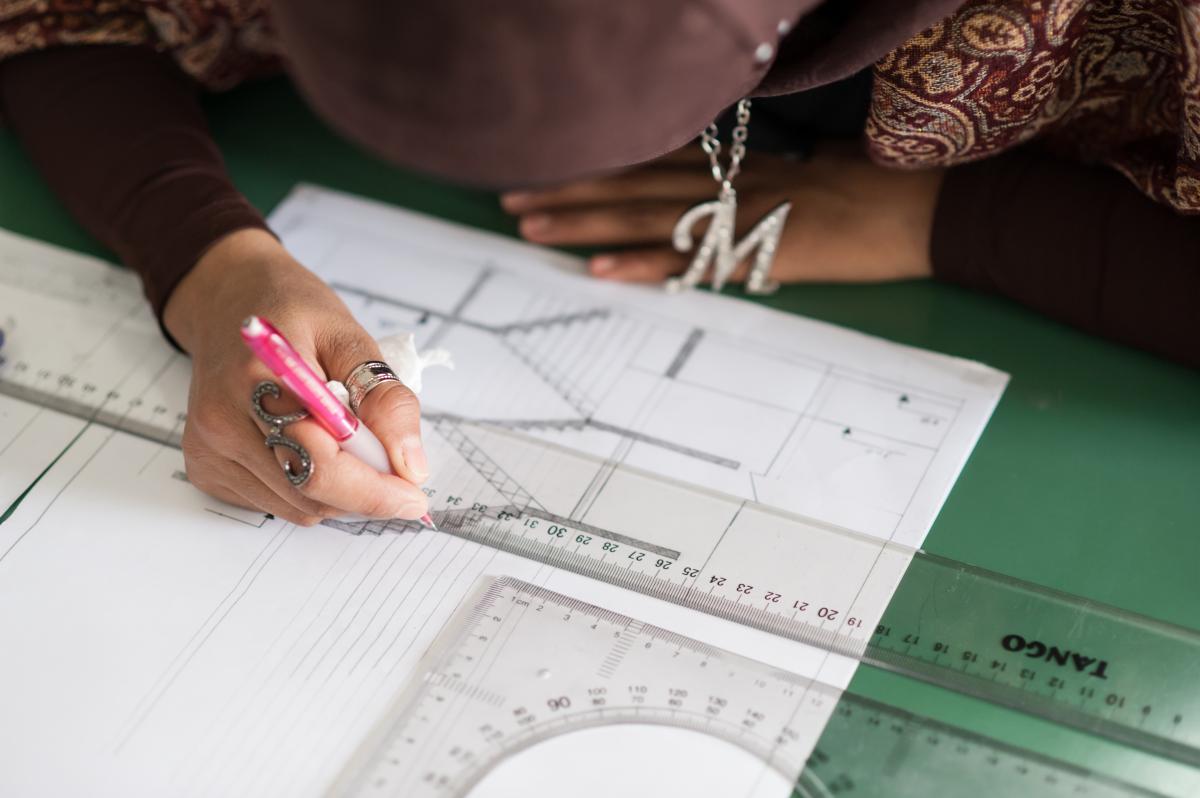
Launch of “Enhance Resilience for Micro- businesses and Create Sustainable livelihood Opportunities in the Gaza Strip (SAWA)” Project
Roula HANDAL | 28/01/2020
On December 13th, 2019, the European Union launched a new project called 'SAWA' (Arabic word for ‘Together’) with an overall objective to enhance resilience for Micro- businesses and create sustainable livelihood opportunities in the Gaza Strip. The project will be implemented by Enabel - Belgian development agency with a budget of 1,650,000 EURO and a duration of 36 months.The Gazan private sector has proven to be the main contributor to jobs creation and self-employment in the Gaza Strip. Over the last decade, with the different shocks happened starting with the ongoing closure and restrictions imposed in 2007 and the destructions during the three wars in Gaza, the private sector remains resilient, especially when meeting local needs for construction, agriculture, trade, services and such like. Only a few solitary export-oriented businesses have managed to demonstrate their regional competitiveness.SAWA takes into account the complex problems which the Micro, Small and Medium Enterprises (MSME) face in Gaza. It will use a multi-level approach to strengthen the self-help potential and competitiveness of the Palestinian community and private sector; including Civil Society Organizations (CSOs), private companies and their associations.SAWA will develop a “two-pronged approach”: enhance livelihood of the vulnerable youth and women in marginalized and underserved localities, on one hand, and support growth in facilitating the emergence of new economic opportunities in green and circular economy, on the other hand.Under Enabel’s direct supervision, coordination and follow-up, SAWA will delegate implementation responsibility to selected Civil Society Organizations and Private Sector Umbrella Organizations (PSUOs) as important partners in the Community-Based Business Support approach.The community-based Business Development approach is about creating local collaboration among the different stakeholders in the community, so that the community will multiply and scale up its fragmented resources. It is particularly well suited for use among poor, vulnerable and marginalized communities where funding and capacities are limited or in communities that are hard to reach due to social or geographical isolation.Two types of beneficiary groups will benefit from SAWA interventions:Direct Beneficiaries:150 unemployed Palestinian youth (male and female) and women with the desire to become self-employed and/or start their own business.40 young unemployed youth (male and female) who have innovative and creative mind-sets and looking for starting their own micro businesses.(2) Civil Society Organisations (CSOs) and (1) Private Sector Umbrella Organisations (PSUOs).Indirect Beneficiaries:Community-Based Organizations (CBOs)Industrial Sector Associations members of the Palestinian Federation of Industries (PFI)To enhance support structures for MSMEs, SAWA will be contributing to capacity development within the local community. It concentrates on initiatives with short-term impacts as the unstable political situation makes medium or long-term planning very uncertain.SAWA intervention would have two intermediate outcomes:1) Empowered vulnerable women and youth for establishing sustainable and resilient micro businesses This is related to supporting the resilience of unemployed persons to create their own business. It will support the establishment of viable and economically sound microbusinesses for women, women groups and youth (male and female), through,i. Support livelihood: improve the resilience of vulnerable youth (men and women) livelihood through creating sustainable microbusinesses. Livestock, services and commerce are potential sectors.ii. Support social economy: improve the resilience for existing women owned cooperatives to improve their business. Type of supports may include marketing and access to market activities, product development and packaging.2) Empowered youth for initiating sustainable and innovative green/circular economy initiatives. This is about transforming problems in the industrial sector into a (green) business opportunity through supporting innovative business ideas that serves the local industrial sector and the environment are facing.
-
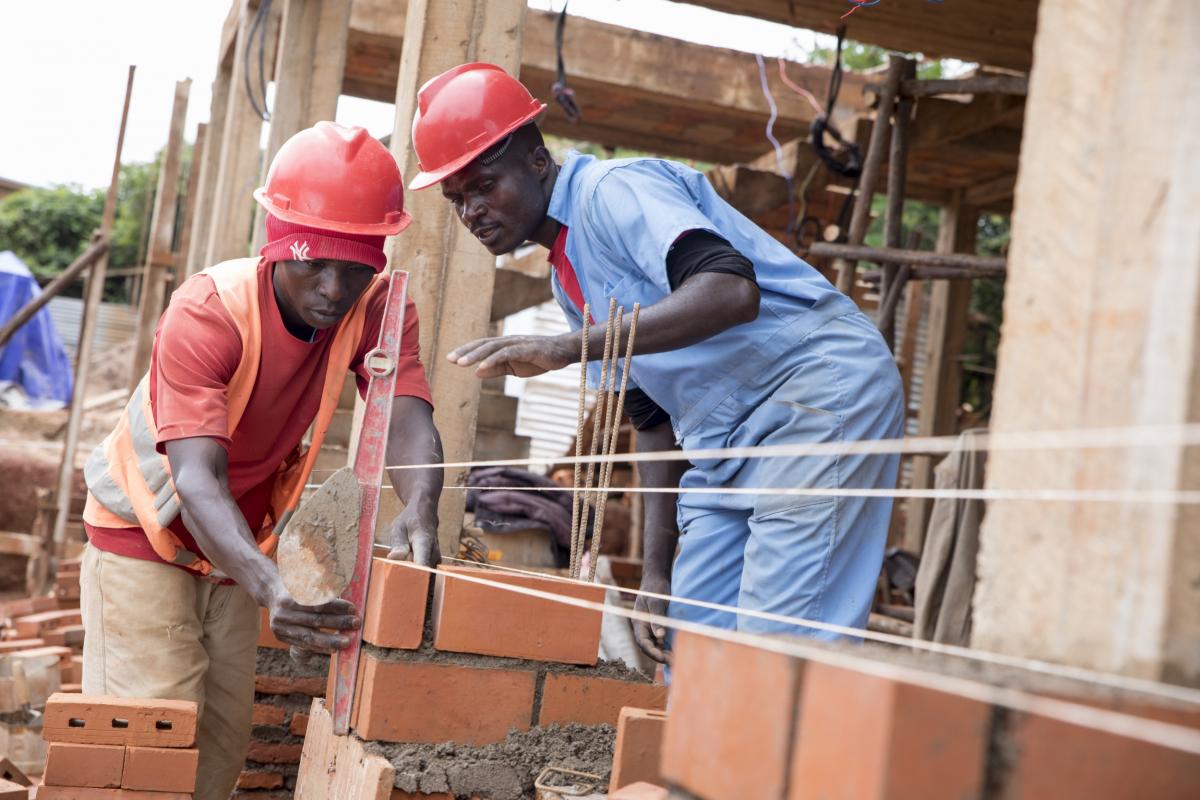
Formation à la mise en œuvre de briques modernes au profit des Centres d’Enseignement des Métiers au Burundi
Etienne RODENBACH | 16/01/2020
Dans le Cadre du Projet ACFPT, Enabel, l’Agence Belge de Développement, appuie les Centres d’Enseignement des métiers en investissant dans des constructions ciblées pour améliorer les conditions d’accueil et permettre aux établissements d’offrir une formation de qualité dans de bonnes conditions. Trois Centres de Ressources Multimédias sont en construction à Karurama, Gatete et Mugutu pour faciliter la mise en application progressive des apprentissages à travers les outils digitaux et augmenter l’attractivité du centre bénéficiaire. Ces constructions sont mises en œuvre en utilisant une technologie de briques modernes en collaboration avec l’organisation suisse SKAT qui promeut l’emploi de matériaux de construction respectueux de l’environnement, constituant ainsi une opportunité de formation des entreprises à cette technologie. La formation visant en premier lieu l’acquisition de nouvelles méthodes de mise en œuvre des briques dans les maçonneries a été dispensée en décembre 2019 sur site dans les trois Centres d’Enseignement des Métiers au Burundi dans les provinces de Gitega, de Rumonge et de Cibitoke. Les briques artisanales jusqu’ici encore utilisées dans les constructions au Burundi nécessitent beaucoup de matériaux et par conséquent, génèrent un ratio élevé du cout par mètre carré construit. Les briques modernes qui sont des briques semi-industrielles solides et homogènes quant à elles, diminuent le cout de construction. Pour un mur équivalent en briques artisanale, on utilise moins de briques et moins de mortier de ciment sans compromettre sa résistance (par exemple 200 briques artisanales équivalent à 90 briques modernes par mètre carré). La cavité intérieure permet d’obtenir une isolation thermique et acoustique efficace et tend vers une technologie de construction rentable et durable. L’un des maçons bénéficiaires de la formation affirme qu’il y a une nette et grande différence : « La formation acquise nous permettra de construire de bonnes et solides maisons par rapport à celles construites avec les briques artisanales, et nous pourrons également participer dans des projets de construction à l’extérieur du pays. » Enabel, en collaboration avec SKAT contribue à l’élargissement des perspectives d’accès à un emploi de qualité pour les maçons formés, et l’utilisation de la brique moderne au Burundi constitue un grand développement dans le secteur de la construction et est potentiellement créatrice d’emploi. Regardez aussi le reportage vidéo: https://youtu.be/GdhW4oLdGE0?list=PLgnfcBtveF5Op4pW_cxOkU3arVjb52Uvt
-
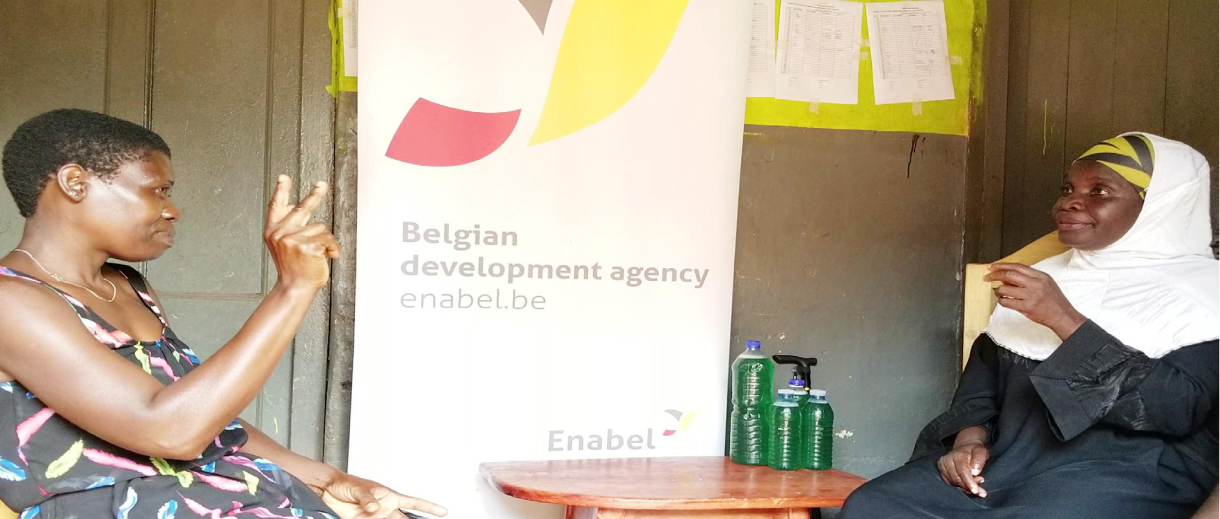
HOPE FOR THE DISABLED YOUTH THROUGH SKILLS DEVELOPMENT
Racheal AKELLO | 16/01/2020
Malyamu Kyakusiimire, a deaf mother of five, lives and sells in Kijura trading centre. Before she joined the skills training on liquid and bar soap, she would only sell her foodstuff. However, things took a turn for better as she has added soap to her stock every evening in Kijura trading centre.The six-day training programme in liquid detergent and bar soap production was held in Masindi district in November 2019. The training was designed to equip 50 youths with short skills training that bring immediate impact to their lives. Disabled youth, especially the deaf, are among the most marginalised population in Uganda. The negative behaviours and attitudes from society towards the hearing impaired eventually leads to slow progression in their lives. They meet communication challenges which reduce their chances to access education and gain meaningful employment. In a bid to support relevant skills development for vulnerable youth, especially women and girls, Enabel, the Belgian development agency through the Support to the implementation of the Skilling Uganda strategy (SSU) project, has partnered with the livelihood actor Safeplan Uganda, to promote skills training to vulnerable youth and persons with disabilities in Masindi district. When Hajat Mwajuma, Malyamu’s interpreter asked her to come and learn about liquid and bar soap making, she readily accepted this request. Malyamu went ahead to learn and go back to sell her foodstuff every evening for all the six days of training. On average, she used to earn about UgShs. 2,000 as profit from her work, but ever since the addition of soap to her stock, she earns up to UgShs. 5,000. Malyamu is a very aggressive woman in business who, despite her hearing impairment, does not allow this to infringe on her capability to earn money. 'I am impressed with the liquid soap skills training,’ says Malyamu, as interpreted by Hajat Mwajuma. She also adds, ‘Out of my savings of UgShs. 70,000, I want to add and start my own soap production.’ Malyamu is currently working as a commission agent selling liquid soap earning 30% of her all her sales at Safeplan Uganda office.
-
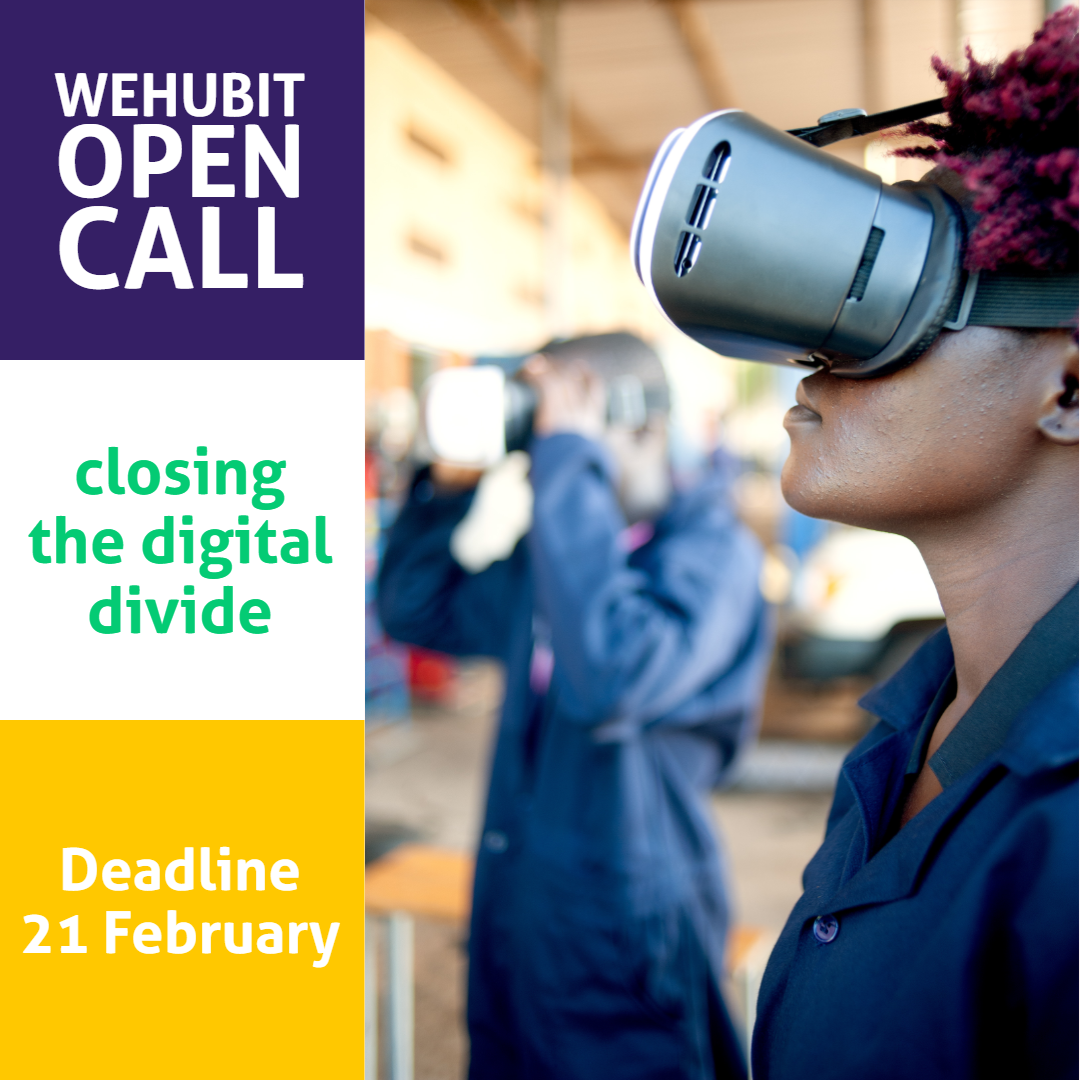
Call for Proposals - Closing the digital divide through education, training and the world of work
Arnaud LECLERCQ | 09/01/2020
*** Call for proposals - Closing the digital divide through education, training and the world of work ***Digitalisation is transforming the way jobs are being carried out. Holding great potential for citizens and societies, it will lead to new career pathways and create jobs in the digital economy. But not everyone has access nor the ability to grasp these opportunities. We believe education, training and the world of work play a key role in overcoming this ‘digital divide’. So with this new call for proposals Wehubit is looking for innovative digital solutions who contribute to closing the digital divide by improving digital literacy and skills through education, training and the world of work.Who can apply? Projects wishing to deploy digital solutions in one of the 14 partner countries of the Belgian development cooperation which are implemented by public or non-profit actors seeking to scale up a digital application. More information: www.wehubit.be
-
Rural renewable energy use and the challenge of clear communication
Akila MUNIR | 23/12/2019
By A. de Clippele and E. Waeterloos, Enabel Mozambique Sustainable access to energy is an important vector to improve the living conditions of the rural population of Mozambique. Not only can sustainable energy access facilitate day-to-day life by extending hours for food preparation, studying or watching TV. It can also create new opportunities for local income generation through production of goods or services such as recharging of mobile phones or sales of cold drinks. However, the link between energy access and income-generating activities is not always well-known nor straightforward. That is why it is important that the population has appropriate access to information about possible productive uses of energy. In addition, the impact of energy in everyday life has a strong gender dimension, as many of the household and small-scale income generation activities are undertaken by women. Therefore, energy can also be a tool to address gender inequities. It is with this in mind that the Mozambican partner Ministry of Energy and Mineral Resources (MIREME) organized with the support of Enabel a two-day event on 28 and 29 November 2019 in the locality of Chinhambudzi in the province of Manica. The objective was to promote and exchange knowledge on productive uses of energy and its link with gender equity. This event was attended by the local populace, local authorities and MIREME gender focal points from all provinces of Mozambique. Various public and private stakeholders shared their ideas and answered questions about productive uses and gender equity. Both the local authorities and the population showed interest in the topic, which demonstrates that access to energy is an important preoccupation for all. It was also the opportunity for the ministry to be in contact with the population and better understand its expectations. The gap in lifestyle between the rural areas and cities where the ministries are based, makes sometimes difficult for the authorities to understand the needs of the rural population. While for instance the information distributed by the authorities will explain the different sources of renewable energy, the concepts and advantages, the population is more interested in practical information. Information that they could directly use in their daily life. Such as how, in practice, renewable energy will help them to have light at night? How do the improved ovens work, how much wood or charcoal will it save and where could someone acquire one? What are the details to verify in order to acquire a reliable solar mini-kit? After this public event, all gender stakeholders of the energy sector had the opportunity to meet and discuss future actions. Different organisations such as MIREME, provincial delegations, local authorities, FUNAE (Rural Energy Fund), Police, CPCS (Provincial Council for the Fight against AIDS) as well as two local associations were present. Although all interventions were linked to gender equity and energy use, the relation between these two proved to be complex topics for the local stakeholders. The concept of productive use is very broad and not always fully understood. In Mozambique, classical examples of productive uses of energy are irrigation, electrical sewing, installation of fridges/freezers, electronic welding, improved ovens … The latter wood or charcoal-saving stoves/ovens are important, as around 80 percent of the population uses biomass such as wood or charcoal for daily cooking. The link between gender equity and energy transpires clearly in these domestic uses of energy. But also, the question of gender equity inside the public institutions was discussed. Different challenges were pointed out. Among them, the difficulty to distribute the right information. How to reach the whole population? It is one thing to propose a new practice, but another one to have it accepted. It is important that everyone really understands what the advantages are and how to use it. Some associations complained that they were confronted with a strong resistance to change. The market is not yet interested in what they were proposing. Eventually, by sharing experience, the participants agreed that it takes more than new electrical grid lines to improve the living standards of the population. Electrification is a first step, often strongly desired by the communities. But bringing only energy is not enough to promote sustainable development; it is important to also have the devices and applications available to transform these new sources of energy into new sources of income and well-being for the entire community.
